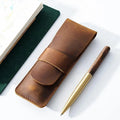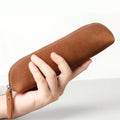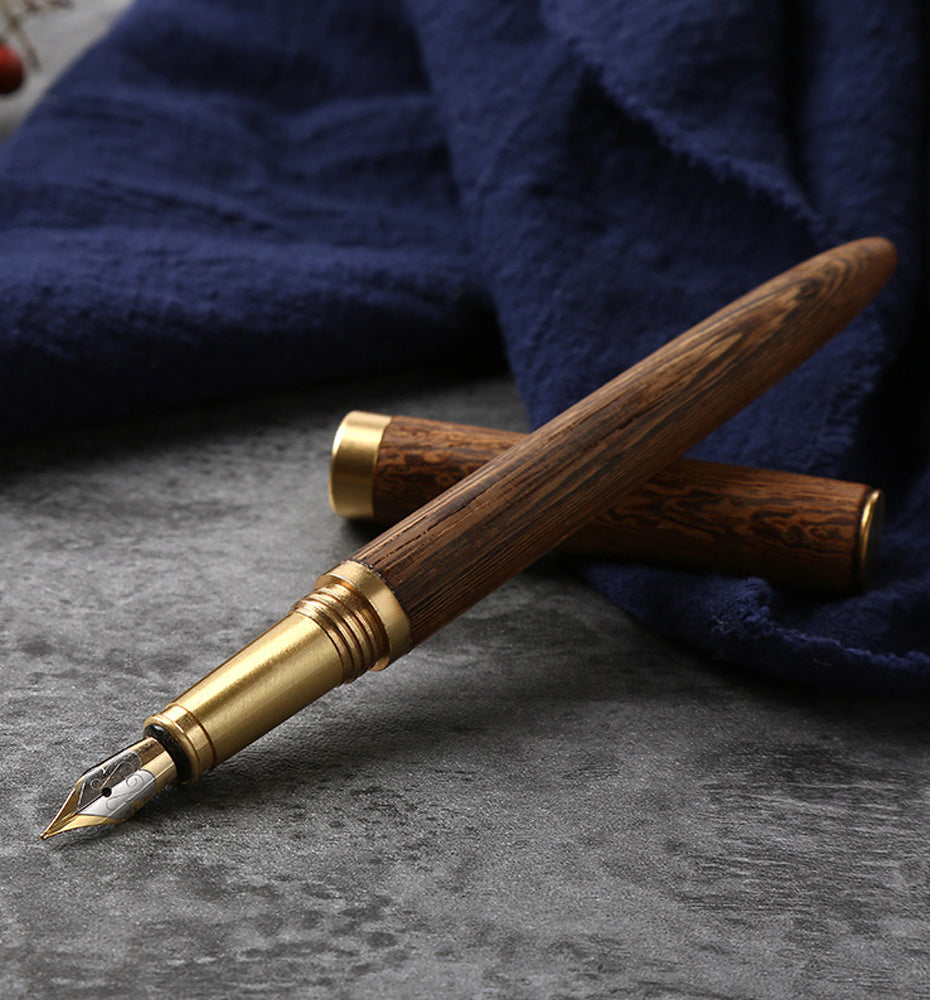
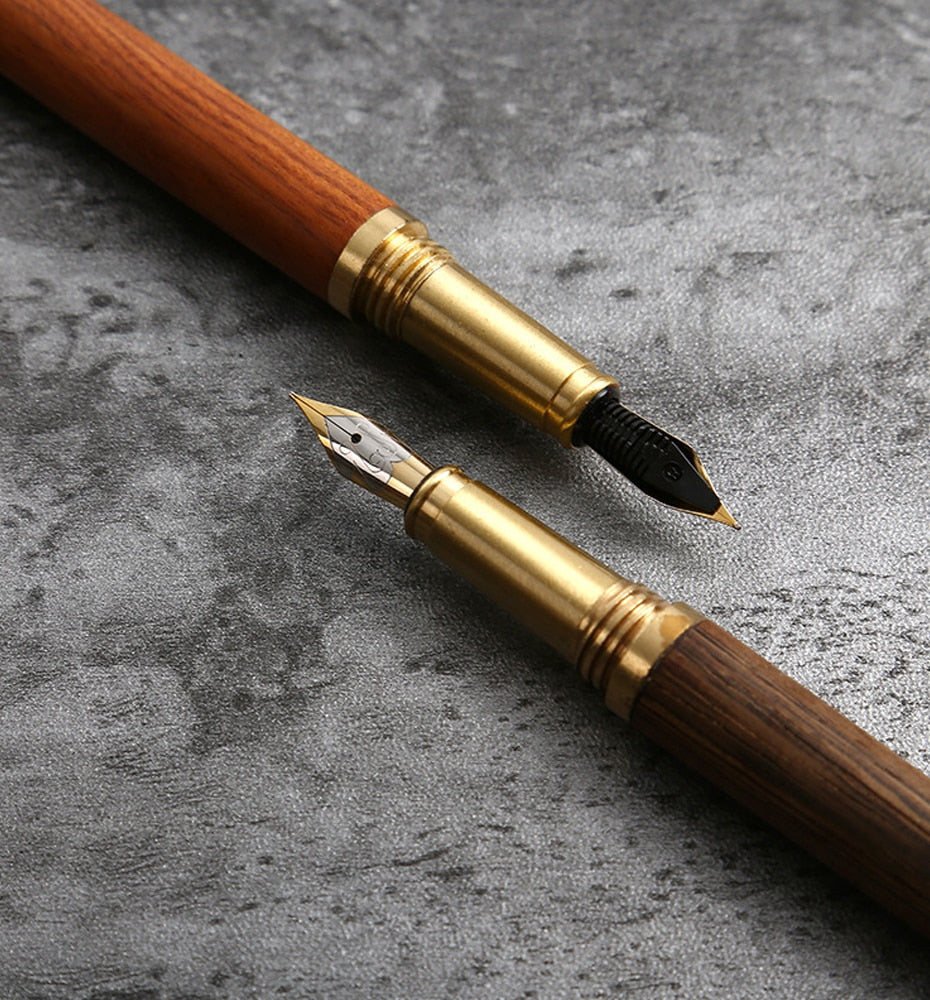
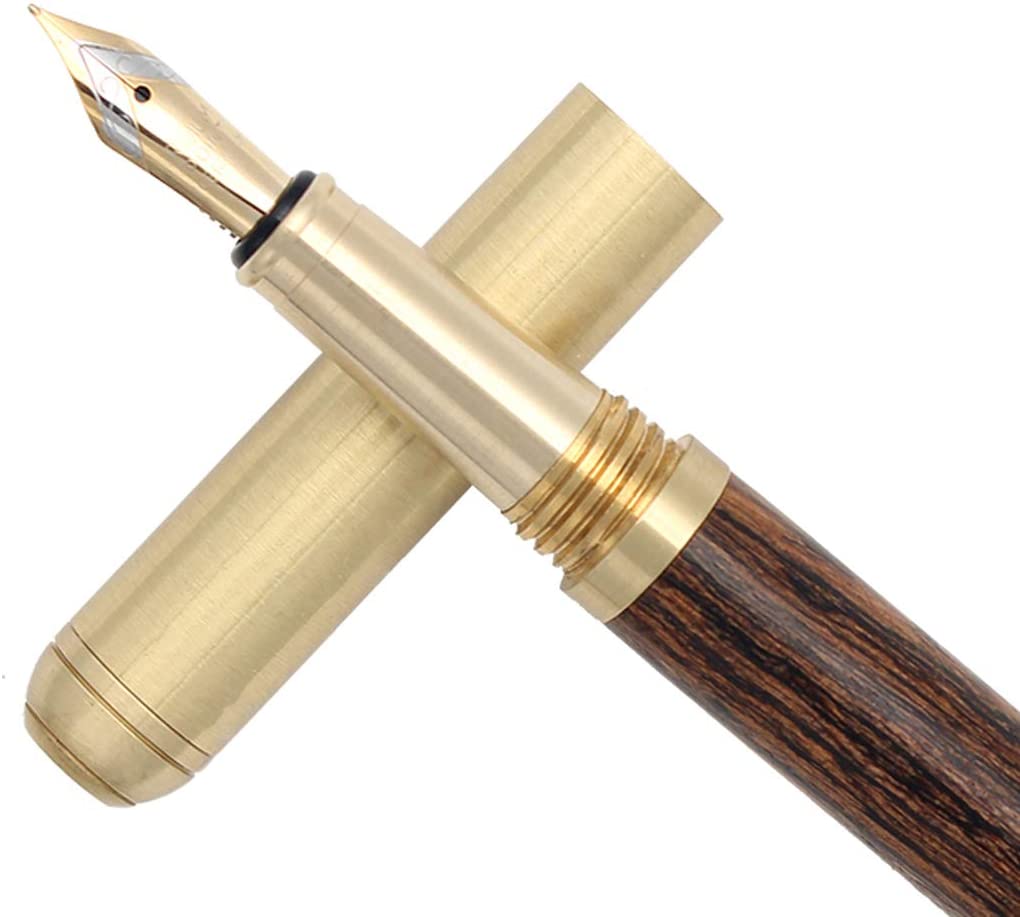
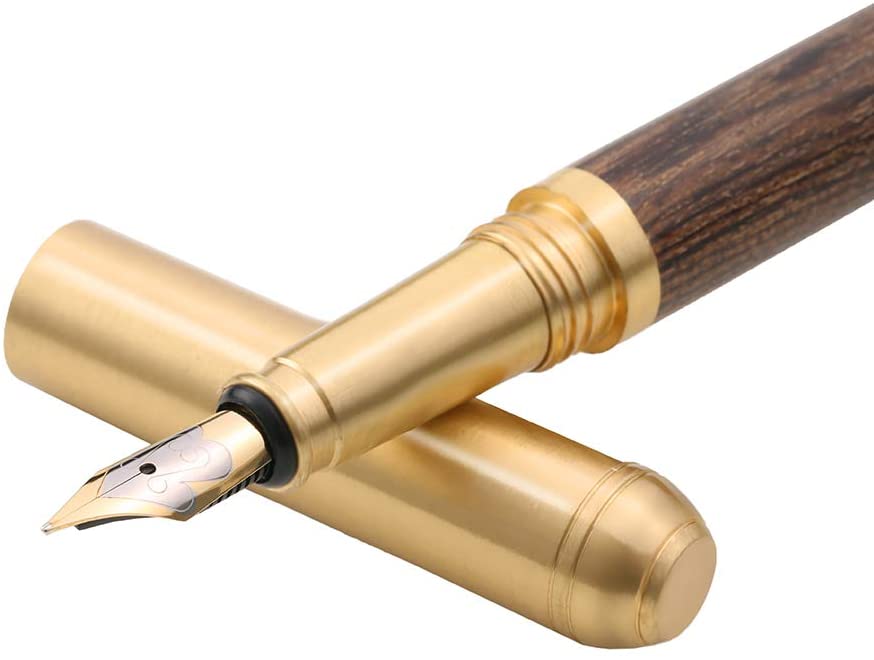
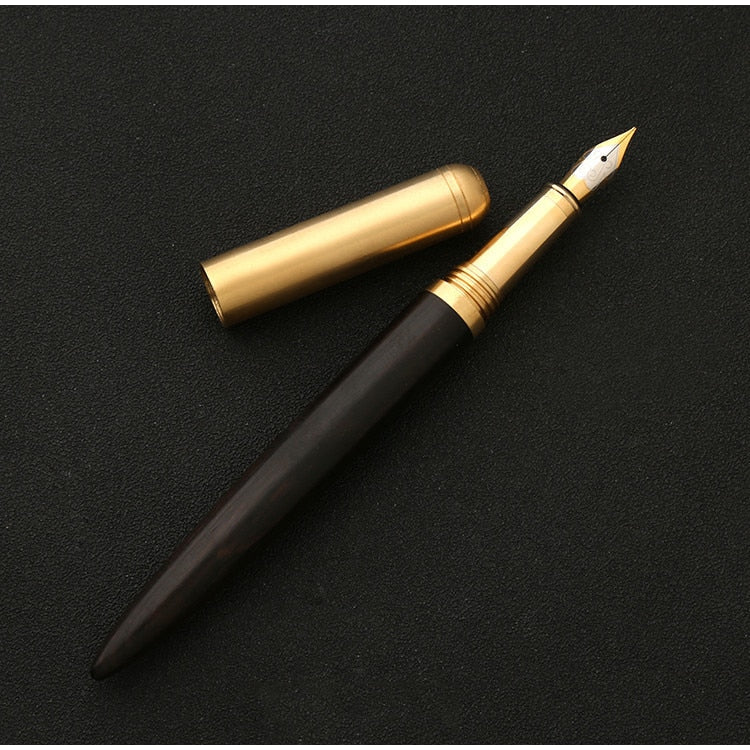
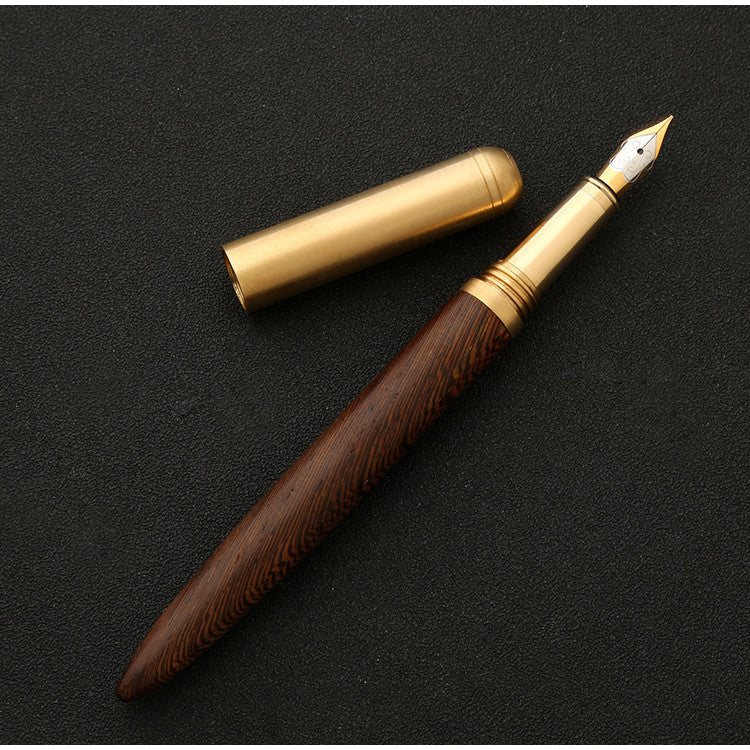
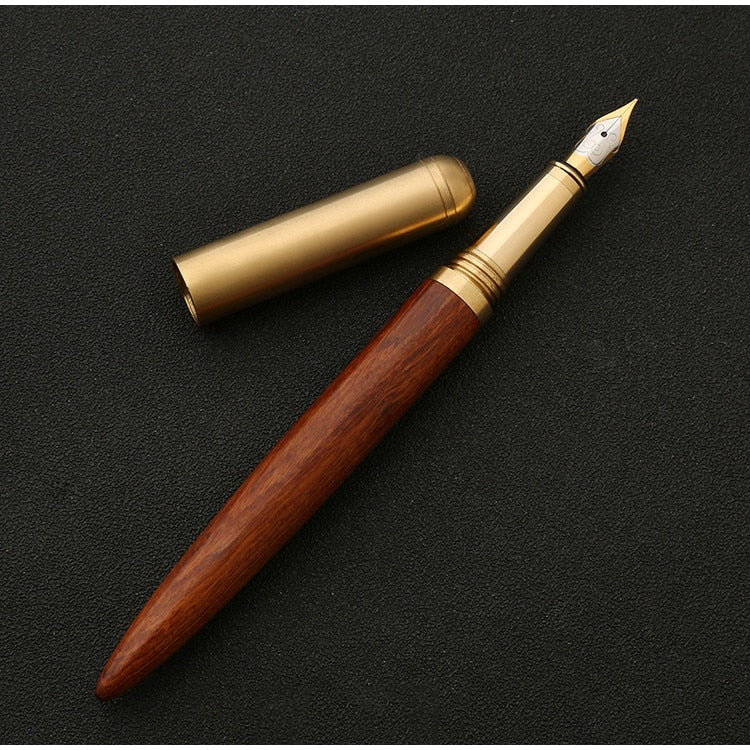
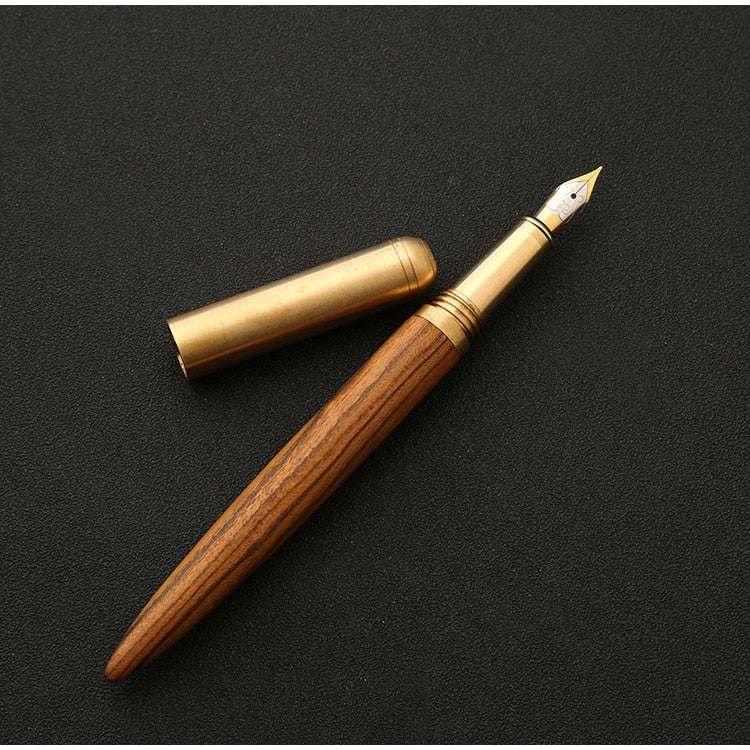
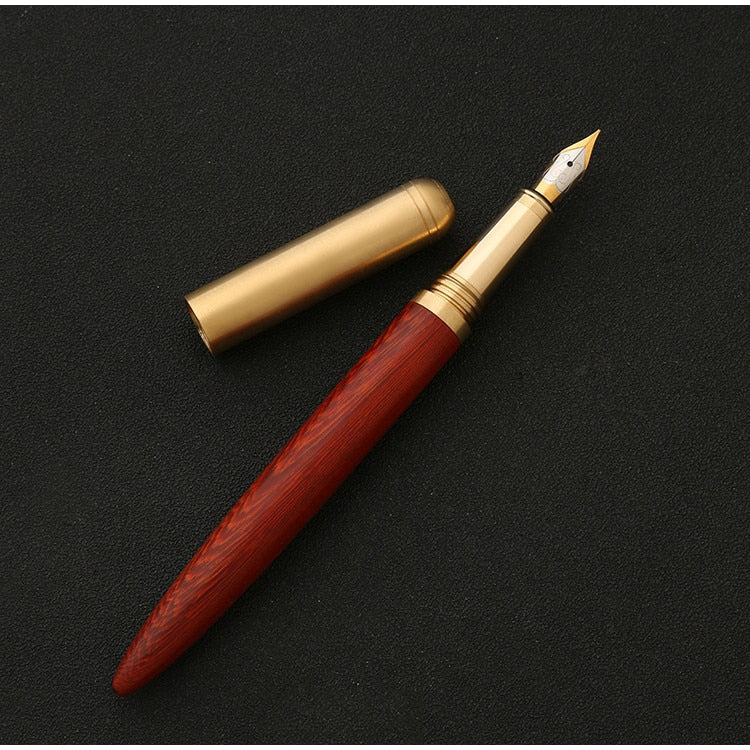
The Hemmingway | Handmade Wood and Brass Fountain Pen
Handcrafted one by one using only the finest materials, we have designed The Hemingway to be a fountain pen of exceptional quality and beauty.
The Hemmingway Handmade Fountain Pen is made from solid brass and with a hand-polished solid wood barrel. This fountain pen is a smooth writing instrument. The pen has a fine Genius Iridium nib. This beautiful wooden fountain pen takes a standard fountain pen ink cartridge or can be used with the included calligraphy ink converter.
Each wood and brass fountain pen is individually handcrafted made from a number of exotic hardwoods including Wenge, Ebony, Rosewood, Cherry, and Zebrawood. Due to the handcrafted process, each item will be unique with its own rich character.
The Hemmingway is truly a work of art. The vintage-inspired design, the smooth heft of the solid brass and hand-turned wood, and the gleam of the real ink writing nib make this pen a real pleasure to use… and to own. Named after the iconic author, The Hemmingway Fountain Pen embodies our reputation for superior craftsmanship and commitment to quality.
Handcrafted wooden pens make perfect gifts for any special occasion or a unique special gift. They are practical (a gift that you can actually use and reuse for years) and as with all wooden items they are tactile, beautiful, and a unique keepsake. The hardwoods used make a beautiful grained pen for a pen collector as for those looking for a sleek, unique and professional pen!
The pairing of the solid brass cap, barrel, and components exude a unique and vintage feel. This fountain pen is a great addition to any desk, pocket, or handbag, and makes a thoughtful gift.
Each pen includes an ink converter.
Complete your pen with our Leather Pen Pouch
Writing Point: 0.7mm
Nib Type: Genius Iridium
Material: Various Hardwoods and Brass
Diameter: 13mm
Weight: 1.7 ounces
Choose options










